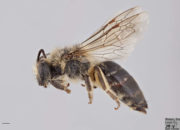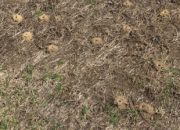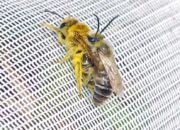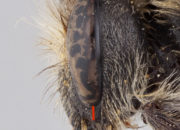Perhaps the most abundant bee in the state from early April through May. Nest aggregations seem to appear over night and can grow to several hundred nests in just a few weeks. Adults are most often found on flowering trees such as Maples and Willows, though visit just about any flower (or other sugar source such as sap buckets).
Identification: Most likely to be confused with Mining Bees (genus Andrena) as few other Cellophane Bee species are active in the spring. See the Cellophane Bee page for tips on separating the two genera. This species is generally a little larger than most of the Mining Bees, and can look a touch longer, though probably only helpful in direct comparison.
Similar Species: The Blueberry Cellophane Bee (Colletes validus) is similar, though has a much longer face and is closely associated with blueberries and sand.
Known or Suspected Parasites: Blood-winged Blister Beetle (Tricrania sanguinipennis)
Global Status: Secure
Vermont Status: Not Ranked
For more information, visit the following links:
Discover Life
Living Atlas Species Page
Distribution: To see the global distribution, check out the iNaturalist account, and toggle the GBIF layer on the map.
 A female Unequeal Cellophane Bee
A female Unequeal Cellophane Bee
 A small part of an Unequal Cellophane Bee nest aggregation
A small part of an Unequal Cellophane Bee nest aggregation
 Mating pair of Unequal Cellophane Bees © Doug Burnham
Mating pair of Unequal Cellophane Bees © Doug Burnham
 The short face of an Unequal Cellophane Bee
The short face of an Unequal Cellophane Bee






